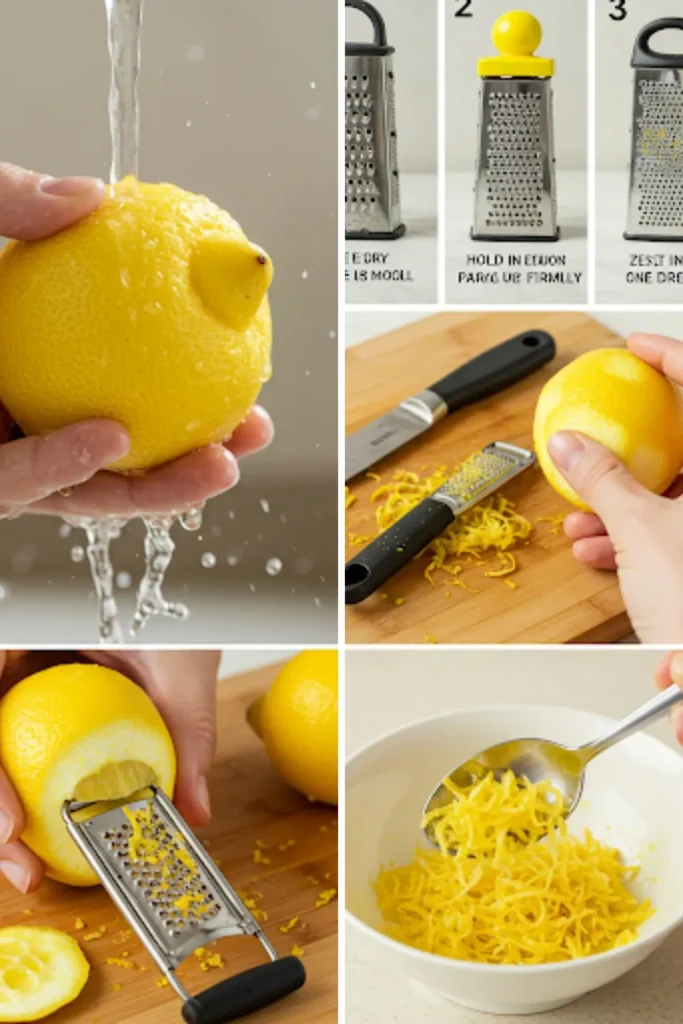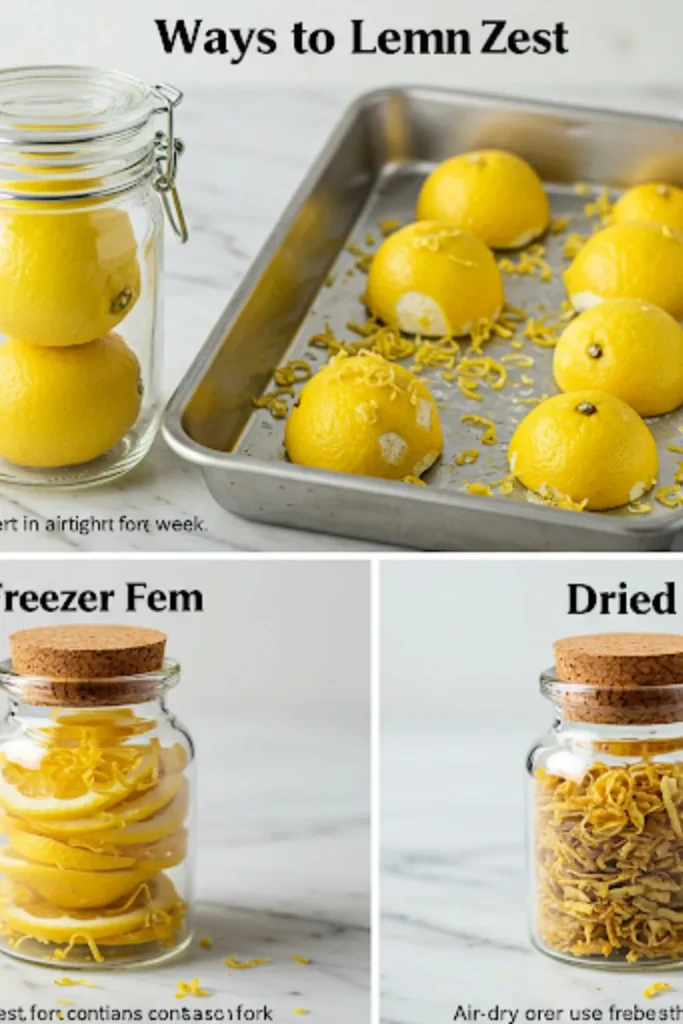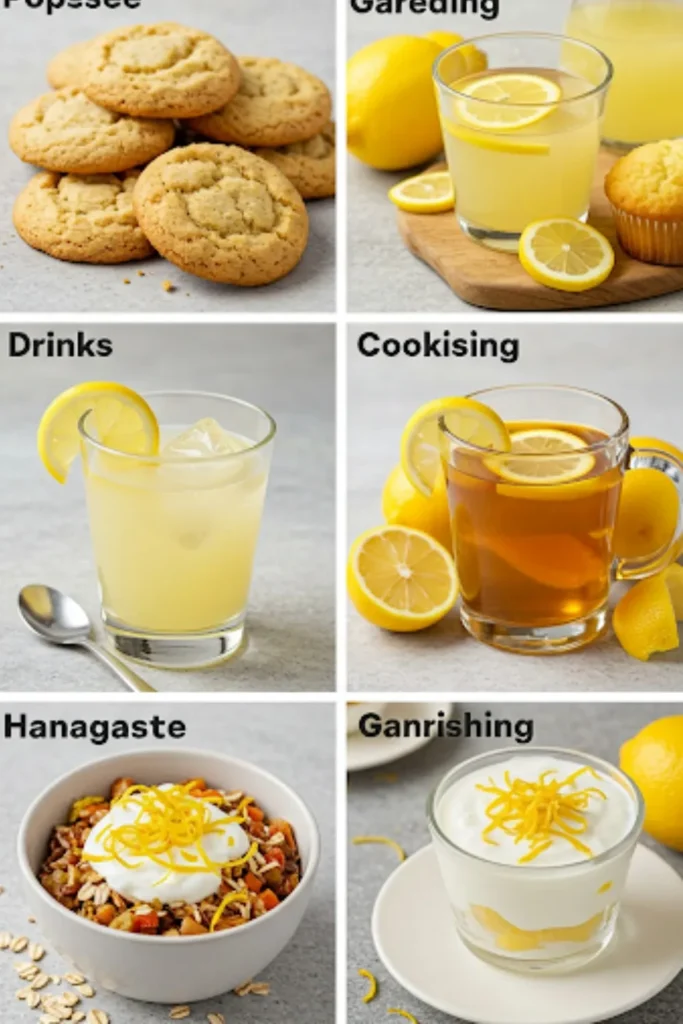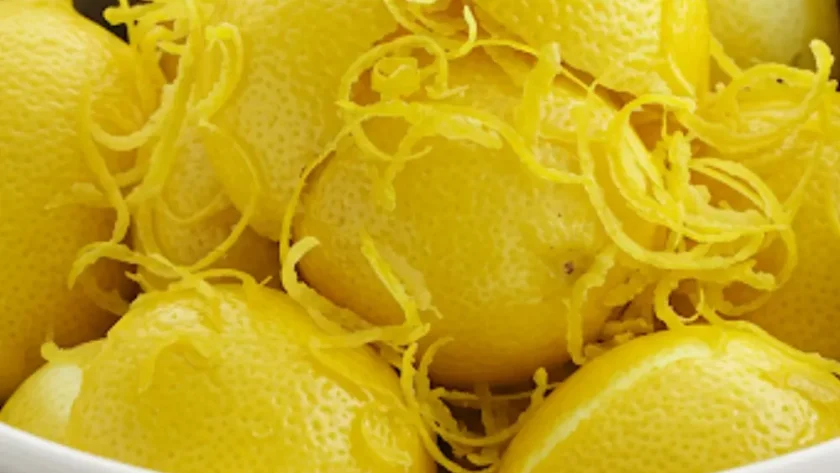Lemon zest is the outer yellow layer of the lemon peel. It contains natural oils that add a bright, citrusy flavor to dishes. Unlike the white pith beneath, which is bitter, zest enhances both sweet and savory recipes.
Tools Needed for Zesting a Lemon

To zest a lemon, you need one of the following tools:
- Microplane Grater – Best for fine, fluffy zest.
- Box Grater (Fine Side) – Works similarly to a microplane.
- Vegetable Peeler – Creates larger strips that can be chopped.
- Paring Knife – Useful for peeling and finely mincing zest.
- Citrus Zester – Produces thin, curly zest strips.
Step-by-Step Guide to Zesting a Lemon

1. Wash and Dry the Lemon
Rinse the lemon under running water and scrub gently. Pat it dry with a towel to remove any wax or dirt.
2. Choose a Zesting Tool
Select a microplane, grater, peeler, or zester depending on your texture preference.
3. Hold the Lemon Firmly
Grip the lemon in one hand and the zesting tool in the other for steady control.
4. Zest in One Direction
Gently scrape the lemon’s outer yellow layer, rotating as you go. Avoid pressing too hard to prevent getting the bitter white pith.
5. Collect and Use the Zest
Tap the zest off the tool and use it immediately or store it for later use in recipes like cakes, sauces, or marinades.
Tips for Zesting a Lemon

✔ Use organic lemons for zesting to avoid pesticides.
✔ If using a peeler or knife, finely chop the zest for even distribution.
✔ Freeze extra zest in an airtight container for long-term storage.
✔ Zest before juicing to make handling easier.
How to Store Lemon Zest

- Refrigerator: Store fresh zest in an airtight container for up to 1 week.
- Freezer: Spread zest on a tray, freeze, then transfer to a bag for up to 6 months.
- Dried Zest: Air-dry or use a dehydrator, then store in a spice jar for up to 1 year.
Common Uses for Lemon Zest
🍋 Baking: Cakes, cookies, muffins
🍋 Drinks: Lemonade, cocktails, tea
🍋 Cooking: Sauces, dressings, marinades
🍋 Garnishing: Yogurt, oatmeal, desserts




